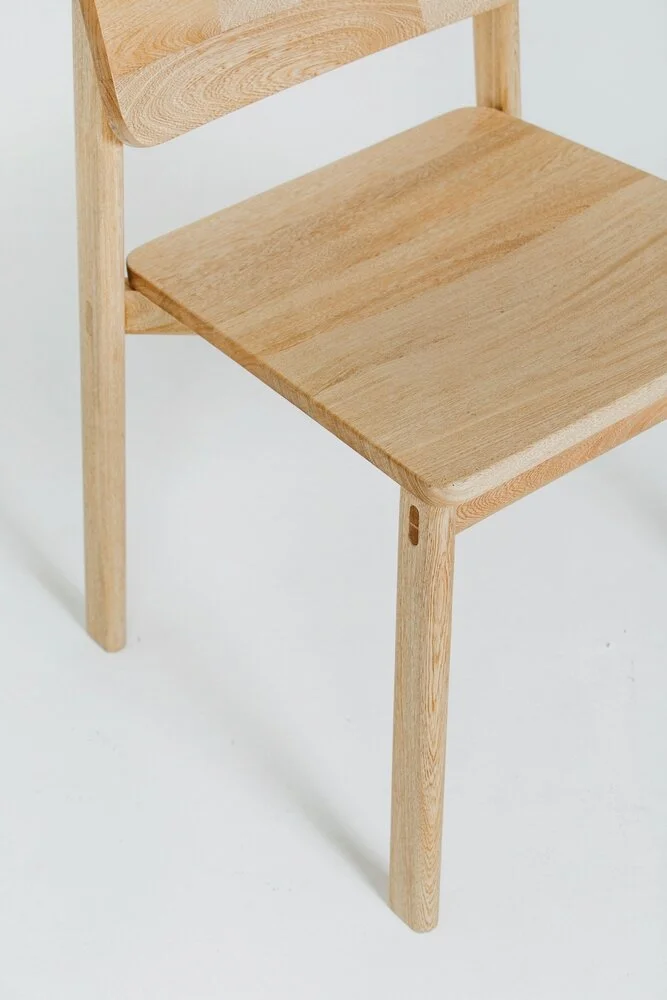Q&A with Perceptual designers Simón Ballen and Camila Pardo
Pieces from the Miranda Collection. Photo courtesy of Perceptual.
Translated from Spanish.
Launched last month during Medellín Design Week, Miranda is a range of minimalist furniture pieces by Medellin-based design studio Perceptual. Upon creating the collection, the Perceptual team reached out to their old friend and current designer at Amsterdam-based studio Formafantasma Simón Ballen.
Miranda by Simón Ballen
After a series of in-person brainstorming sessions and design exchanges between Ballen and Perceptual Creative Director Camila Pardo, the initial ideas were materialized by Perceptual’s design team, who resolved execution and engineering issues. The result is a a collection of timeless, well-built design pieces that go beyond function and become tools for everyday experiences. The night of the launch, kriteria had an opportunity to chat briefly with the duo, so keep reading to learn about their design process, the importance of collaboration, and how they would define Colombian design. See our recap from Medellin Design Week.
Tell me about your collaboration. How did the design process begin?
Pieces from the Miranda collection. Photo courtesy of Perceptual.
SB: I think it all started by trying to define what Perceptual actually is— and not only Perceptual as Perceptual, but as what the brand believes in: that furniture is a tool for everyday experiences. From there, we had to define what elements existed within that range of options. So that’s where we started from, from the brand.
CP: This was a great starting point because the language and essence of Perceptual is something so classic and timeless, that not all brands are looking for, and not all designers align with. After having defined this, we were on our way to discovering a very clean concept, and we were to able to build on this as a point of departure.
What happened next in the design process? How did you ultimately create this collection?
SB: Collaboration and co-creation. I was in Medellín at the beginning— for about two months, and almost all the rest of the work was done remotely. So we would give each other information week by week. We had to deal with the time difference. The process took a little bit over a year, and we really built it together. And as well as being a collaborative process, it was also a difficult, long-distance process.
“Colombian design is a very human design, with a focus on the value of the people behind the objects.
From those who make them, to the materials they come from, people are always at the center.”
CP: At the beginning, Simón was here in Medellin, so he had the opportunity to meet the man who makes our prototypes, and tests the initial pieces. After that, he had to take a leap of faith and trust us, with a weekly follow-up. The trust that he placed on our design team, and our search for solutions, is what allowed us to achieve these results. There were also many challenges, as there are so many different ways of working. For example, as a designer, I have one way of working, but in Perceptual, there is another work style that I adapt to, and Simón has yet another perspective in his design process, so working with that mix of styles was a big challenge.
Ballen and Pardo in a talk at Perceptual the night of the launch.
How would you define Colombian design?
SB: I think that we are still discovering Colombian design. It is a process that we have been building for a long time—I’d say Colombian design is a mestizo design. It is a union of many things, it is a design that not only has one root, but many roots, and that is how we are genetically, culturally, and historically. We are still in that process of finding ourselves.
Colombian design is also a very human design, with a focus on the value of the people behind the objects. From those who make them, to the materials they come from, people are always at the center. Who makes it, where can I get it, how can we build it collaboratively? To me, that is Colombian design!
CP: For me, Colombian design is a mix of different industries, because it's something that is very new to us, very recent. It is also about flavors and races— a mixture of many things, without necessarily being folkloric. The folkloric style is very beautiful, but when it comes to design, it’s not the goal.
Colombian design is also a design that starts from recursiveness, because here, we do not have very developed industries, or a large variety of materials, so our goal each day is to produce something new and innovative with very little. For me, Colombian design is about recursiveness: knowing how little you have, taking it above and beyond, and creating something different.
Address: Cl. 14 #46-30, Medellín, Colombia
Telephone: +57 034 3221467
Follow them on Facebook/Instagram: facebook.com/Perceptual.co; instagram.com/perceptual.co











